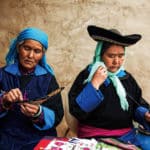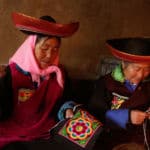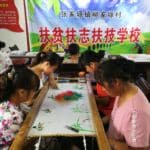“Intangible Cultural Heritage and Poverty Reduction” Online Exhibition

Poverty is a persistent problem and common challenge faced by human society across the world, in which all human beings have been striving to eliminate the poverty.
As the world’s largest developing country with a population of 1.4 billion, China has eliminated poverty for nearly 100 million rural poor people and alleviated regional poverty through arduous and painstaking efforts.
China, which accounts for nearly one-fifth of the world’s population, has completely eliminated absolute poverty and achieved the poverty reduction targets of the United Nations 2030 Agenda for Sustainable Development 10 years ahead of schedule, making a significant contribution to global poverty reduction mission and human development.
In the course of China’s decisive battle to eliminate poverty and build a moderately prosperous society, intangible cultural heritage (ICH), a cultural expression and social practice passed down from generation to generation, has greatly inspired communities, groups and individuals in seeking productive and decent work, income generation and sustainable living.
China’s ICH-based and poverty-relief campaigns are site-specific and focuses on enhancing the sustainable development capacity of poverty-stricken areas. A total of more than 1,100 ICH-based poverty alleviation employment workshops have been set up in national-level poor counties by taking into account local developments and ICH resources of these regions, project scales, number of practitioners, employment opportunities and market potential. With a people-centric policy, these projects serve as a great motivation for the residents to fight against poverty and provide skill training programs for them, under which hundreds of thousands of people received training from 2016 to 2020, with some trainees becoming the leaders of ICH-based poverty reduction work in their areas and to help many more to join the campaigns. With the coordinated efforts of the government, society, market and the whole society, the pattern of poverty reduction projects is as follows: First, formulate special documents and increase policy-related and financial support; Second, coordinate advantages of the East China the West China to narrow regional gaps; Third, mobilize social participation in ICH poverty reduction to achieve mutual benefits and common development; fourth, support consumption poverty alleviation projects and e-commerce platforms to hold “ICH shopping festivals” and benefit people in poor areas by boosting product sales.
Based on its national conditions, China’s ICH-based poverty reduction is insistent on boosting the enthusiasm, initiative and creativity of the poverty-stricken people, promoting harmony, solidarity, truthfulness and pragmatism, and forming an ICH-based poverty reduction strategy with Chinese characteristics. The valuable experience learned in the exploration and development by China in the practice of ICH-based poverty reduction has enriched the Convention for the Safeguarding of Intangible Cultural Heritage and blazed a new path for poverty relief boosted by cultural resources. China is happy to share its experience and practices in the ICH-based poverty relief with the rest of the world and contribute to global poverty reduction to build a community of shared destiny for a better world.







